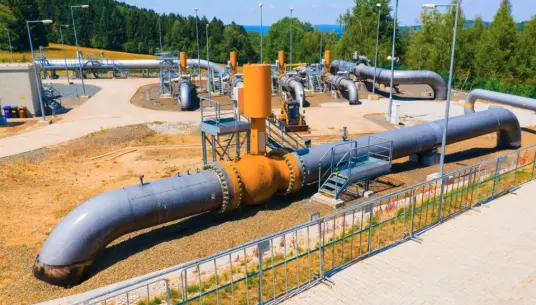Reshorings make up a negligible share of company restructurings in the eurozone
Import-dependent industries have been left increasingly vulnerable following events that have dominated the global stage over recent years – including the pandemic, conflict in the Middle East, and disruptions to supply chains in the wake of Russia's invasion of Ukraine. In turn, this has fuelled assumption that firms would bring production closer to home to reduce exposure to external shocks and has raised expectations of de-globalisation.
However, the European Restructuring Monitor (ERM) shows that reshorings among eurozone businesses remain limited for now. The ERM tracks restructuring announcements by medium-large sized firms across member states, as reported in local media or company websites. While these medium-large firms represent only 1.1% of the total business in Europe, they employ more than half of the workforce and generate almost 70% of the value added. They are also generally more globalised than their smaller counterparts, making them an important contributor to industry trends. An event is included in the Monitor if it impacts at least 100 jobs or 10% of the workforce for companies with more than 250 people. The threshold does not apply to restoring, as it is difficult to predict the number of jobs added due to this. This makes reshoring likely to appear more frequently in the data, and it may therefore be overstated compared to offshoring to begin with.
The reshorings recorded are of two types: companies bringing back activities to their home country that were previously offshored to other EU or non-EU countries, and those reshoring to any EU country activities previously offshored to a non-EU country. Offshorings refer to moving activities of the company outside the country's borders, either to EU or non-EU countries. While this dataset will not capture all restructuring events since some will go unreported, it does provide an interesting insight into production trends.
Since 2019, the ERM has reported over 4500 restructuring events in the eurozone, such as business expansions, internal restructurings, closures, etc. Out of these, reshorings account for less than 1% (though likely overstated), and offshorings about 4%. Even in 2022, during the height of supply chain problems, transport costs going through the roof and shortages of inputs increasing, only 13 announcements of reshoring were traced by the Monitor. And while the numbers are low to begin with, the instances before the pandemic were, interestingly, actually higher, even compared to the offshorings. Since 2019, reported reshoring cases have fallen to a lower level than in 2016-2018.
Except for that period, offshoring cases have exceeded reshorings. For reshoring, data collection started in 2014, while for offshoring this goes back to 2002. Offshoring has moderated since the global financial crisis, but has not gone away altogether. Even in the post-pandemic years, with de-globalisation being widely discussed everywhere, we still see offshorings exceeding reshorings.

Offshorings and reshorings have been concentrated in specific sectors and countries
Nearly half of all offshoring announcements have been from companies located in Western Europe – Germany, Belgium and France. The industries accounting for a majority of these were manufacturing, transport equipment, electrical and electronic products, and machinery. Almost 30% of the announcements since 2014 happened after Covid, suggesting that supply chain disruptions did not significantly discourage companies from offshoring. Several factors can explain why companies are still looking outside their borders, such as labour costs and shortages, catering more for local demand, large investments required for reshoring, regulatory ease elsewhere, or specialised and deeply integrated value chains which are difficult to modify.
Reshorings, while limited, have been prominent in France, Italy and Germany, in the sectors of manufacturing of electrical products, textiles and leather, food and beverage, and transport equipment. These industries account for nearly half of the announcements made since 2014.
Media coverage could be biased, of course, perhaps towards larger firms and more significant sectors, which might explain why these countries and sectors dominate. However, the underlying message remains clear – even among Europe’s largest countries and industries, there is little evidence of a structural shift towards reshoring, at least seen through this real-time dataset.

Despite limited evidence, the risk of trade fragmentation remains relevant
So, despite all the warning signs around a spread-out supply chain seen in recent years, there is still very limited evidence of actual reshoring activity to the eurozone. The costs of local production outweigh the risks of moving abroad for the majority of businesses.
Therefore, the main actions taken by European corporations seem to be the ringfencing of activity in countries perceived as higher risk and diversifying between locations for production. If production is brought closer, it is often more nearshoring than reshoring taking place. In the years ahead, geopolitical risks could add to reasons for producing more locally. But for now, the costs of producing in Europe itself seem to be too high to result in a widespread reshoring of activity.



















































































